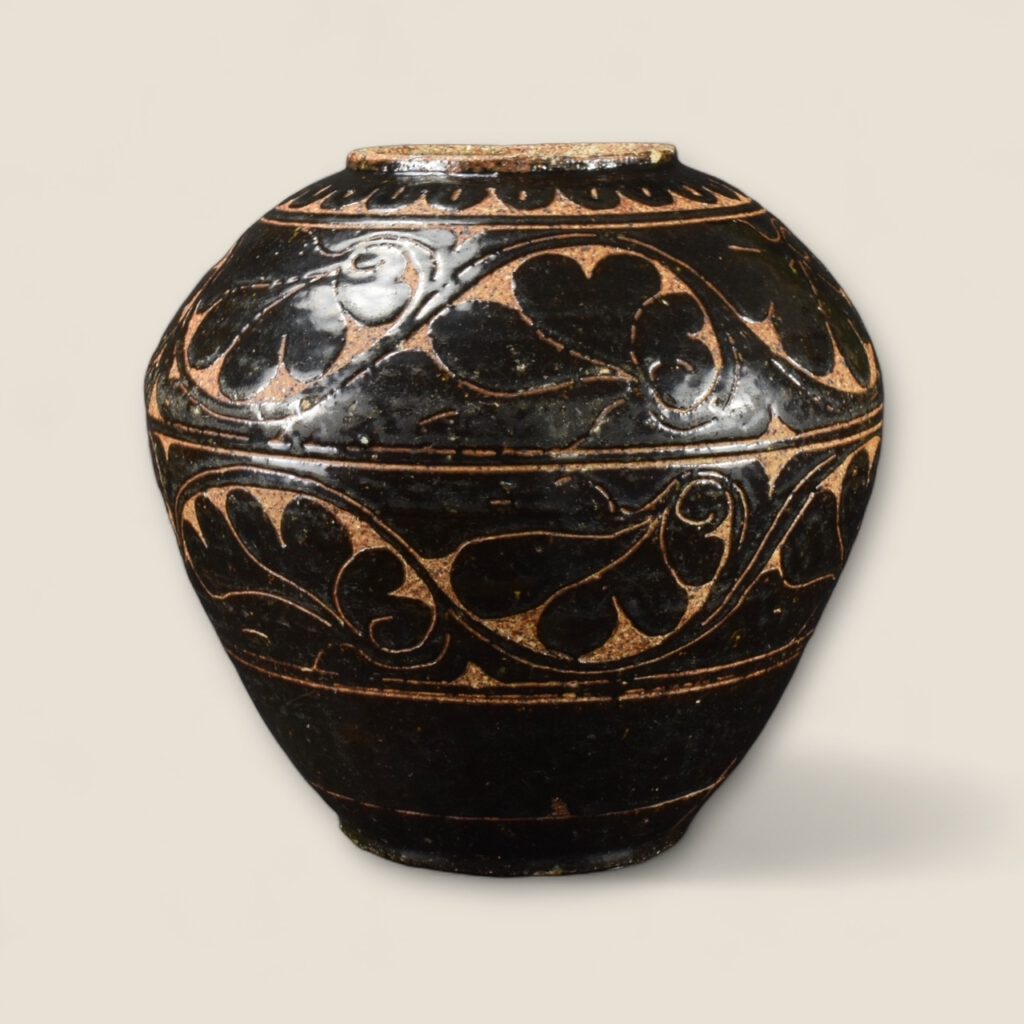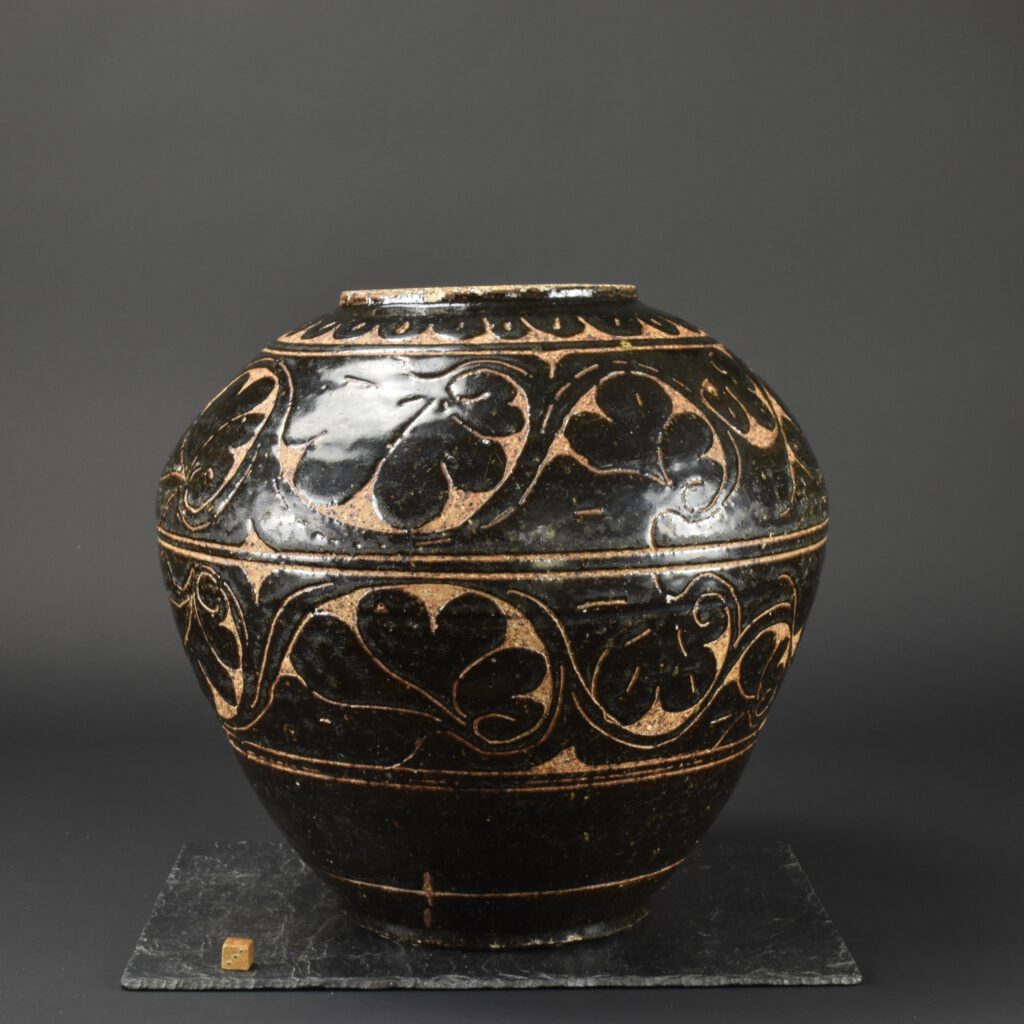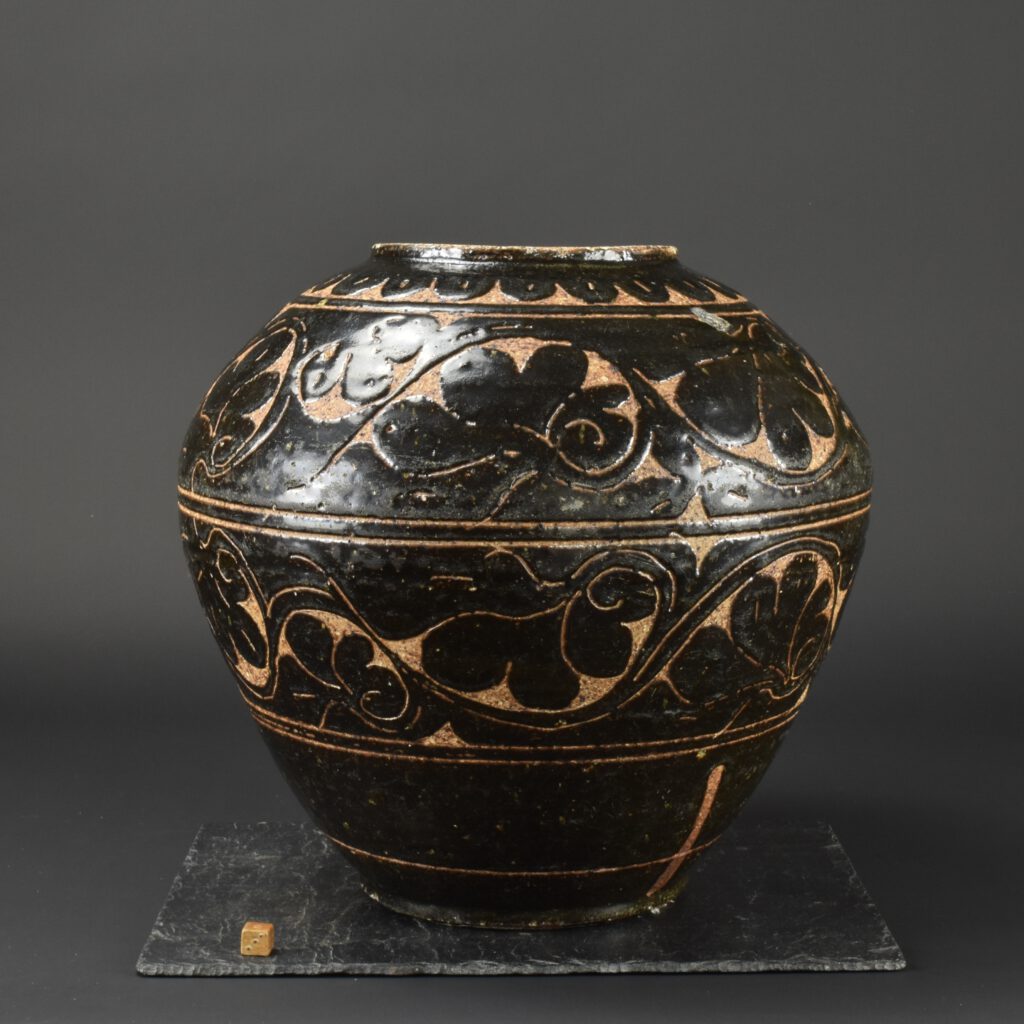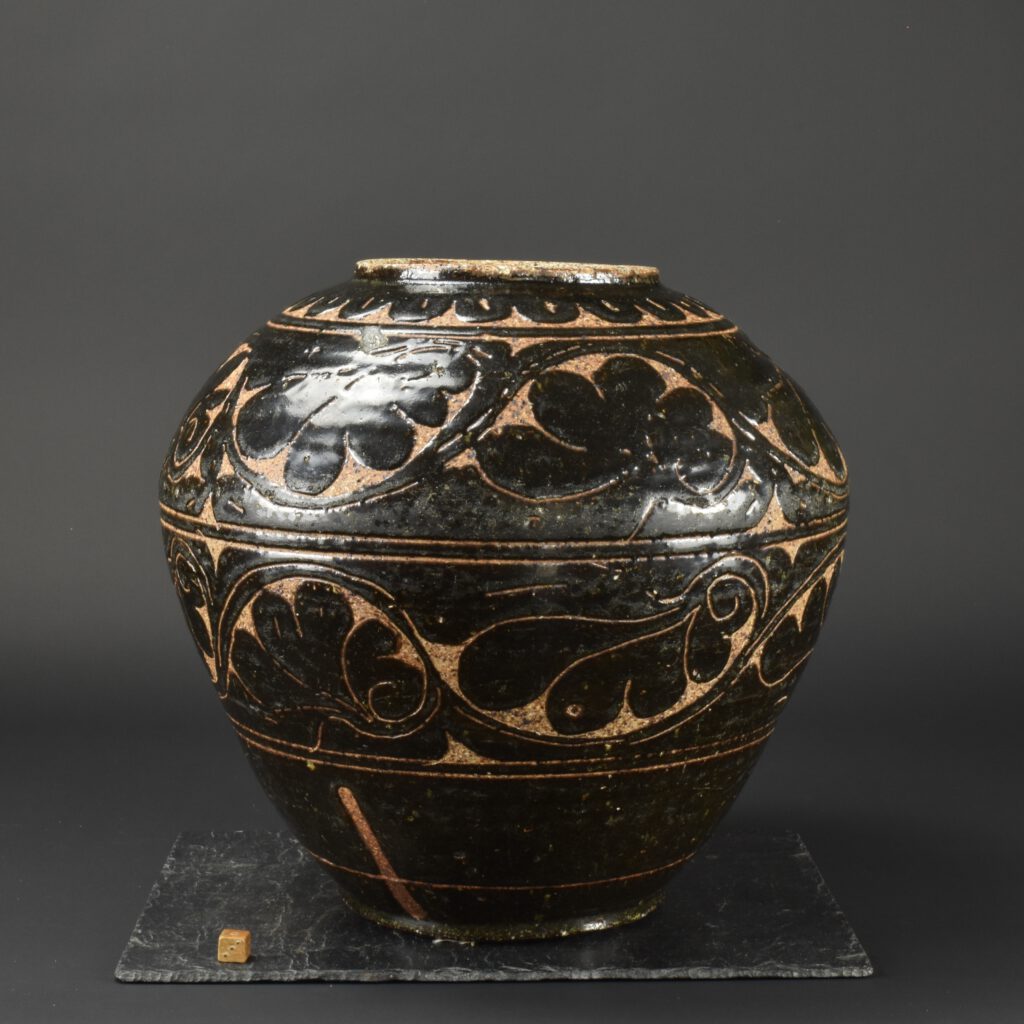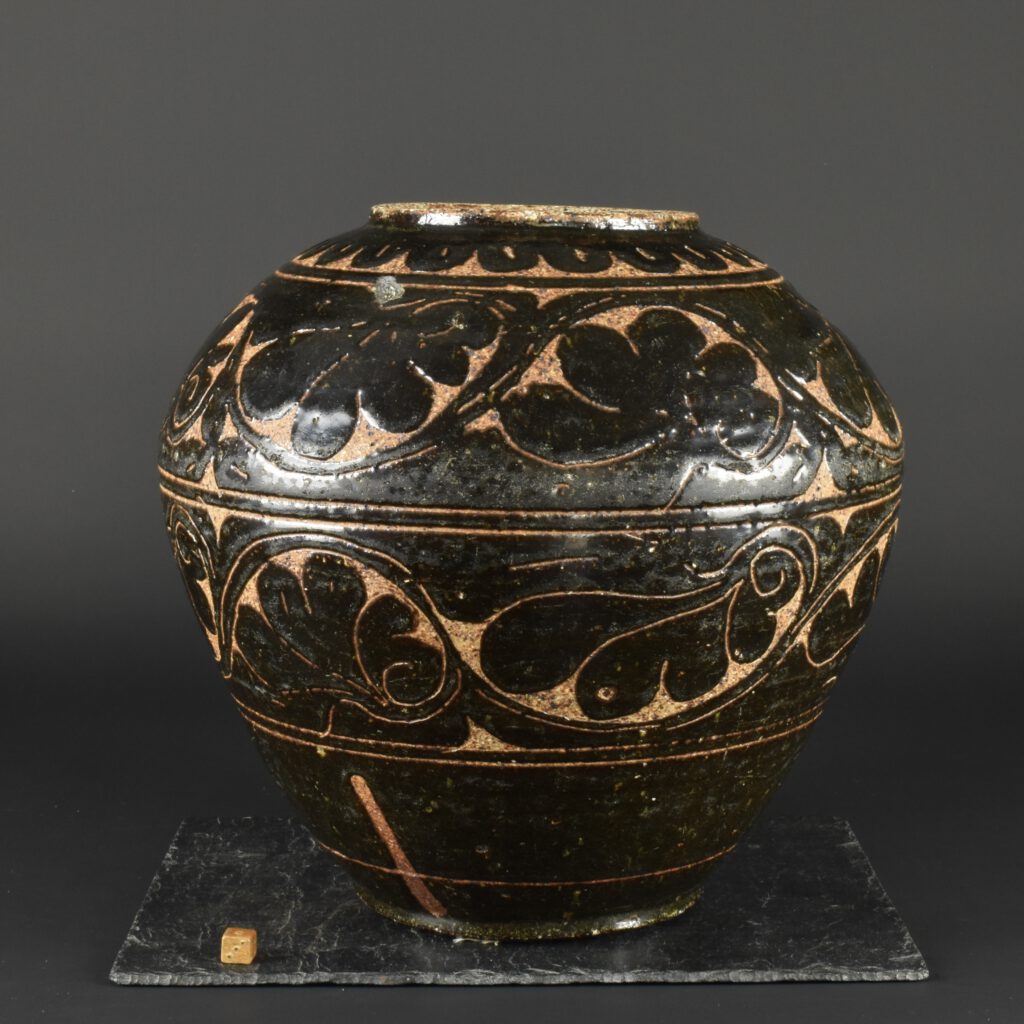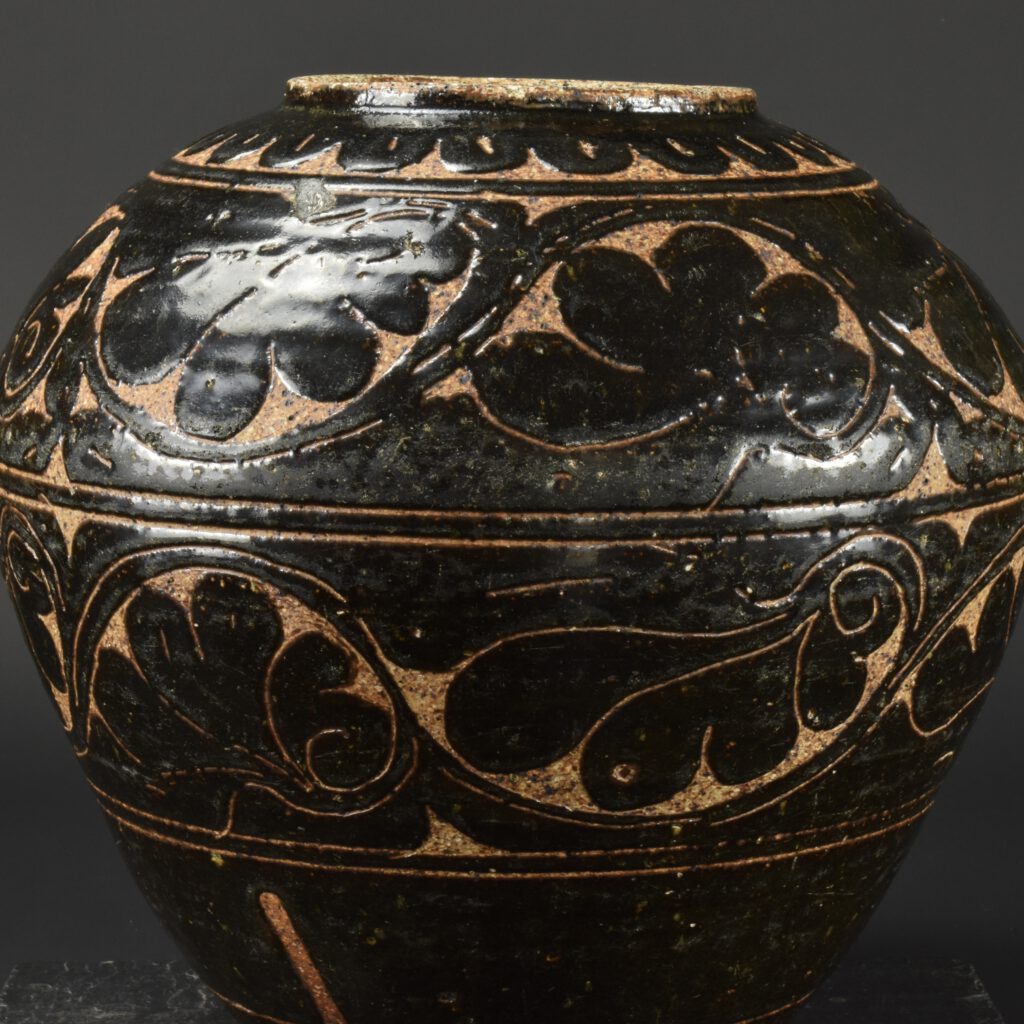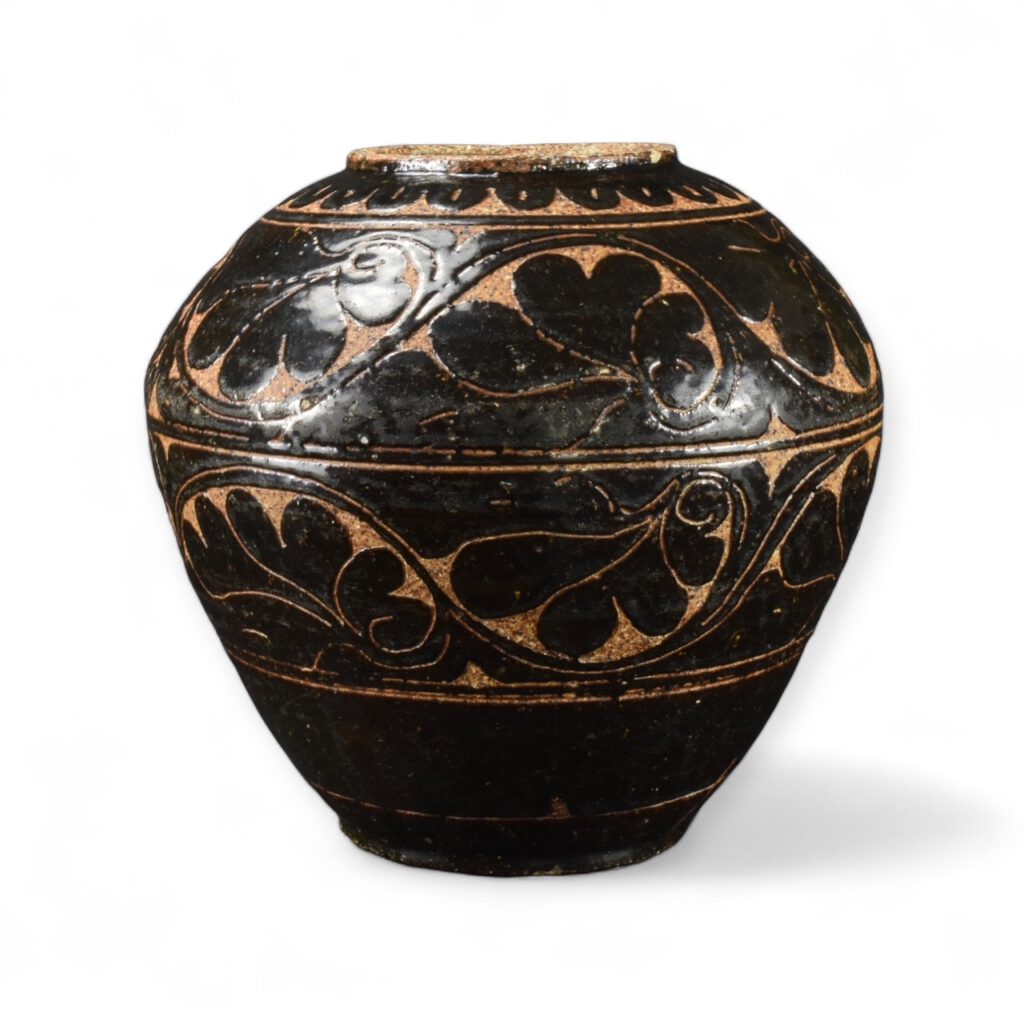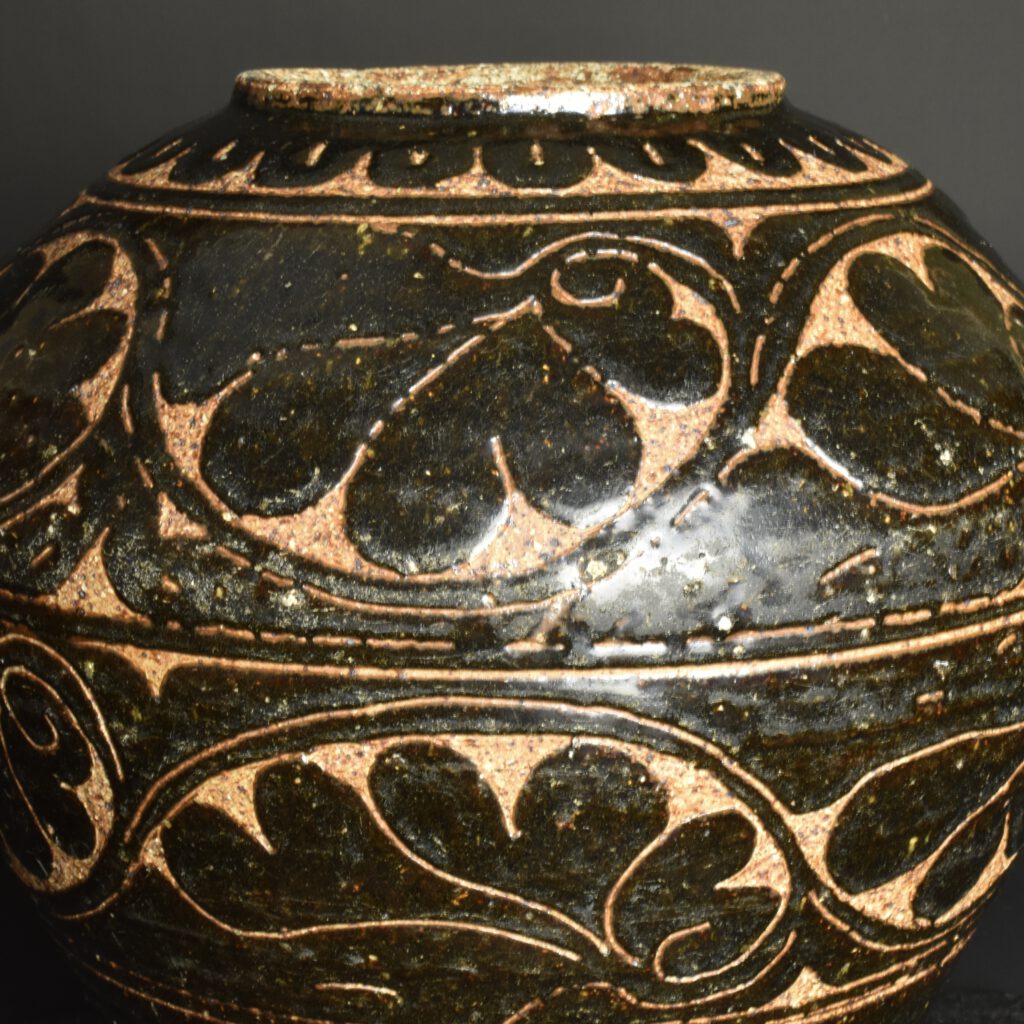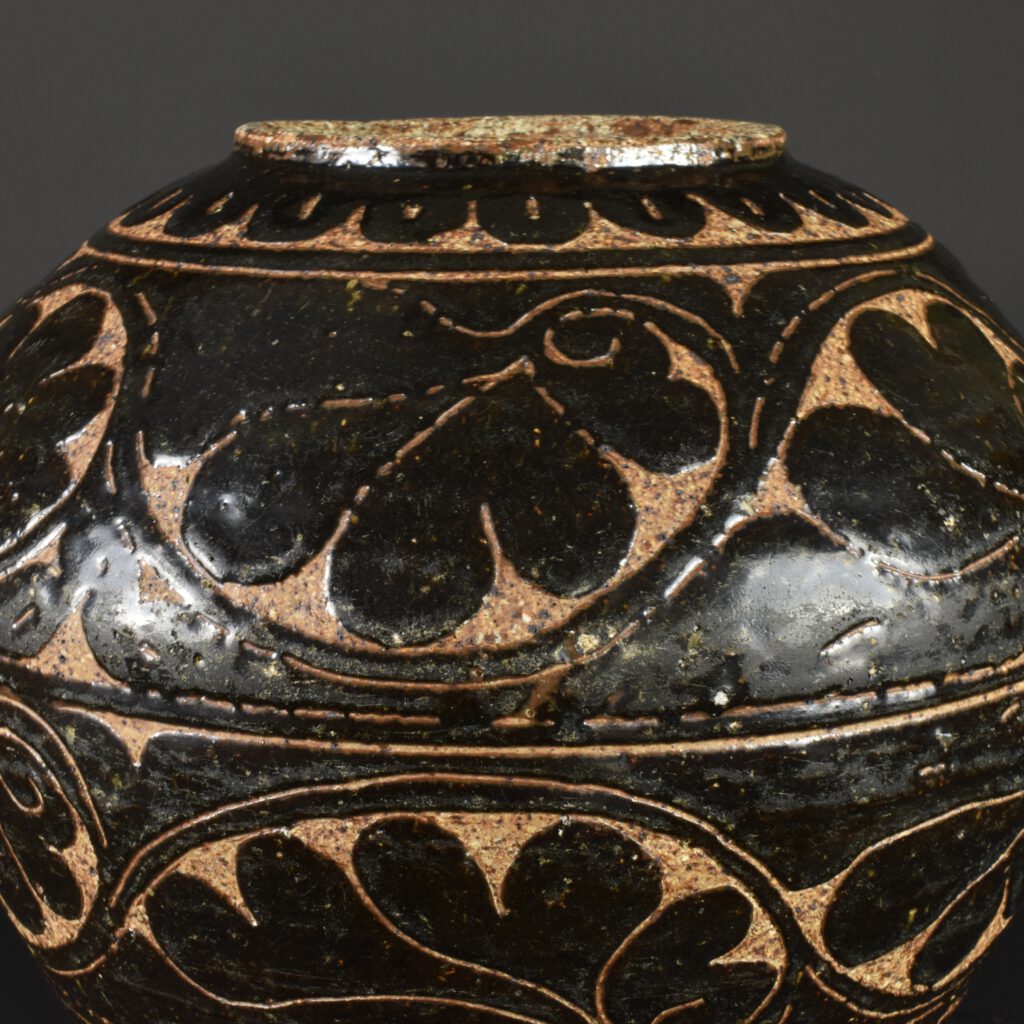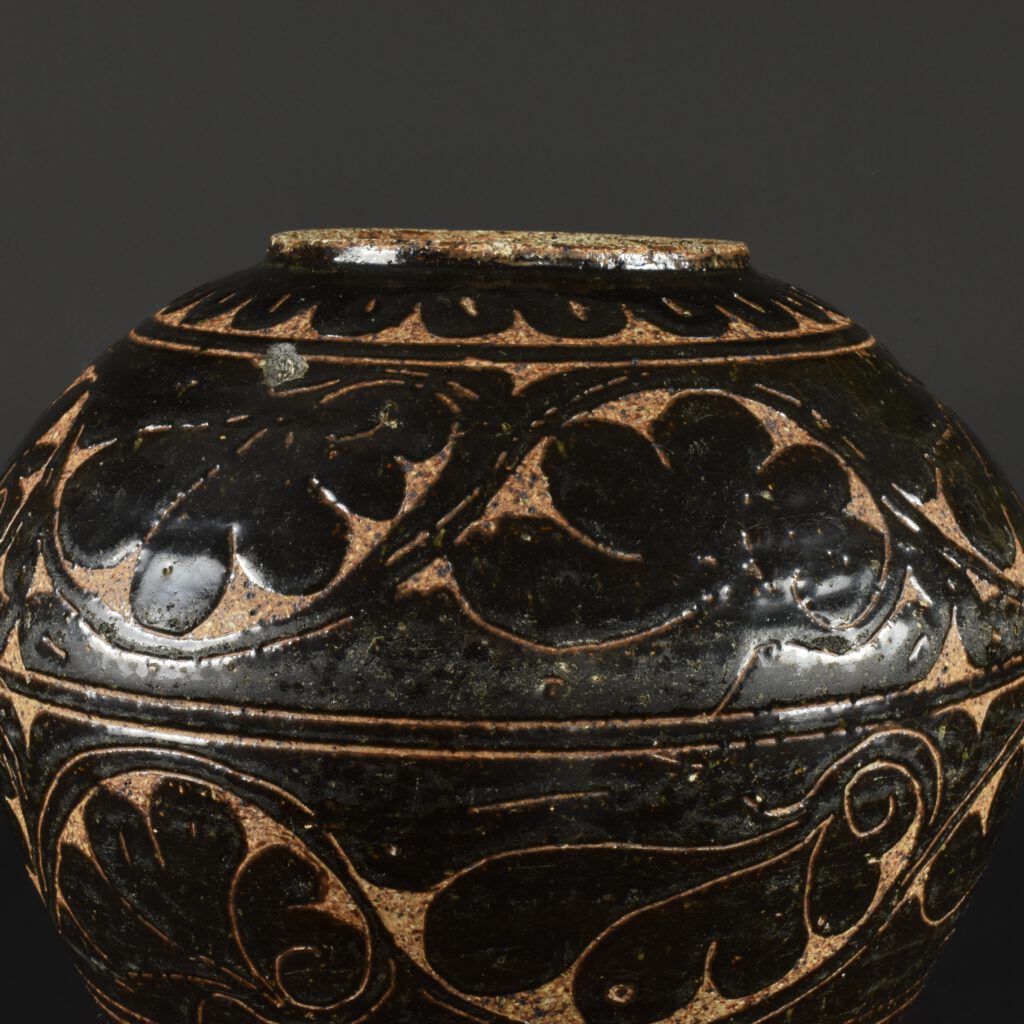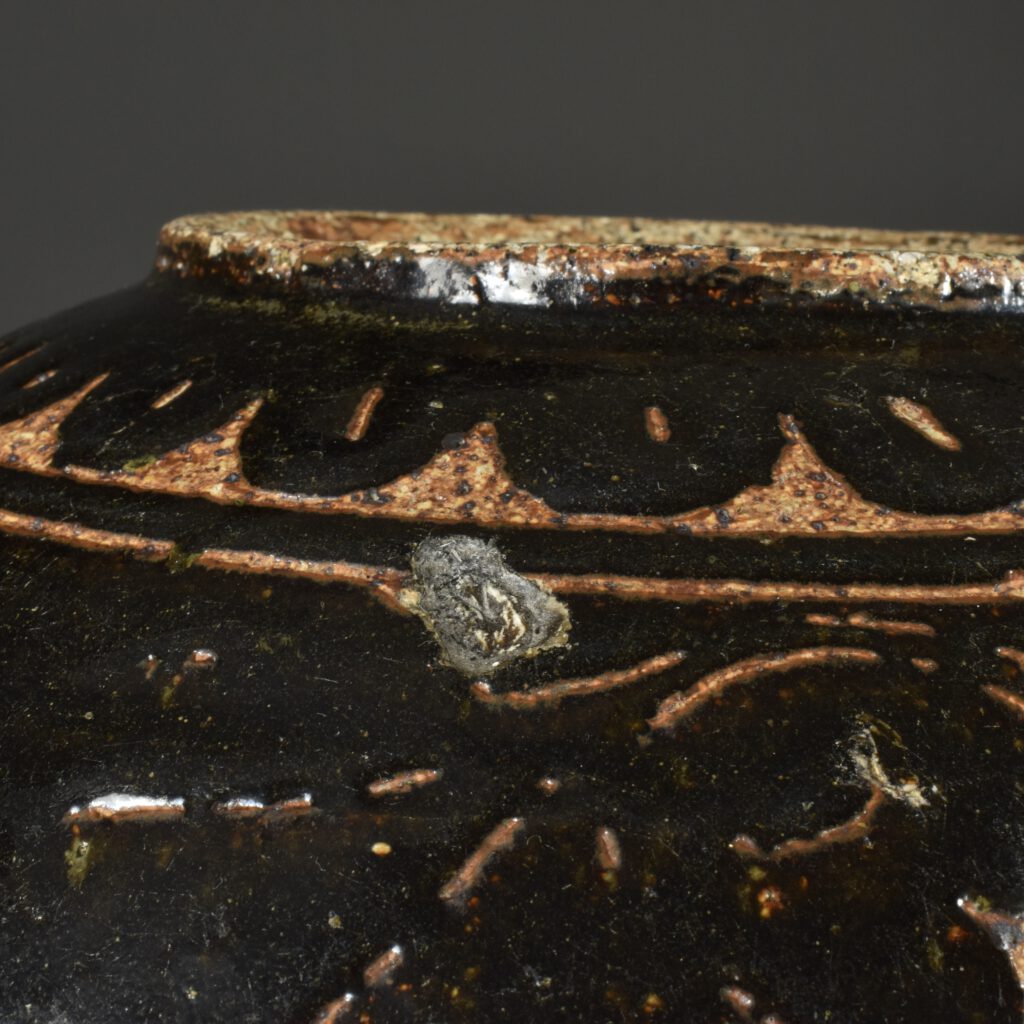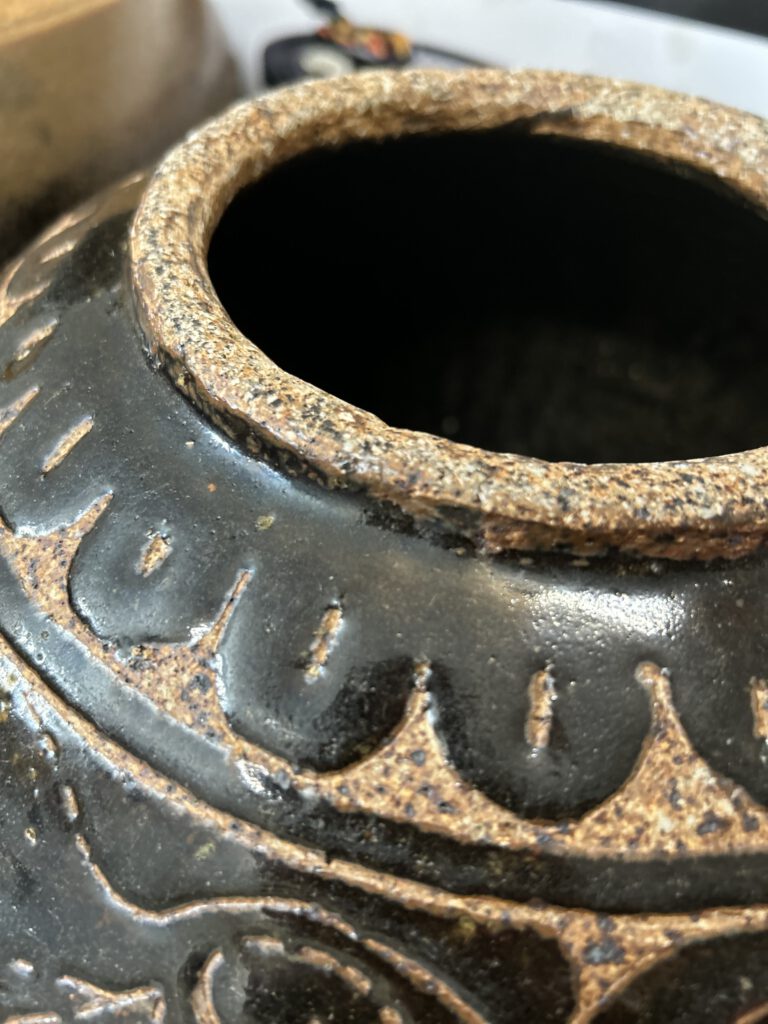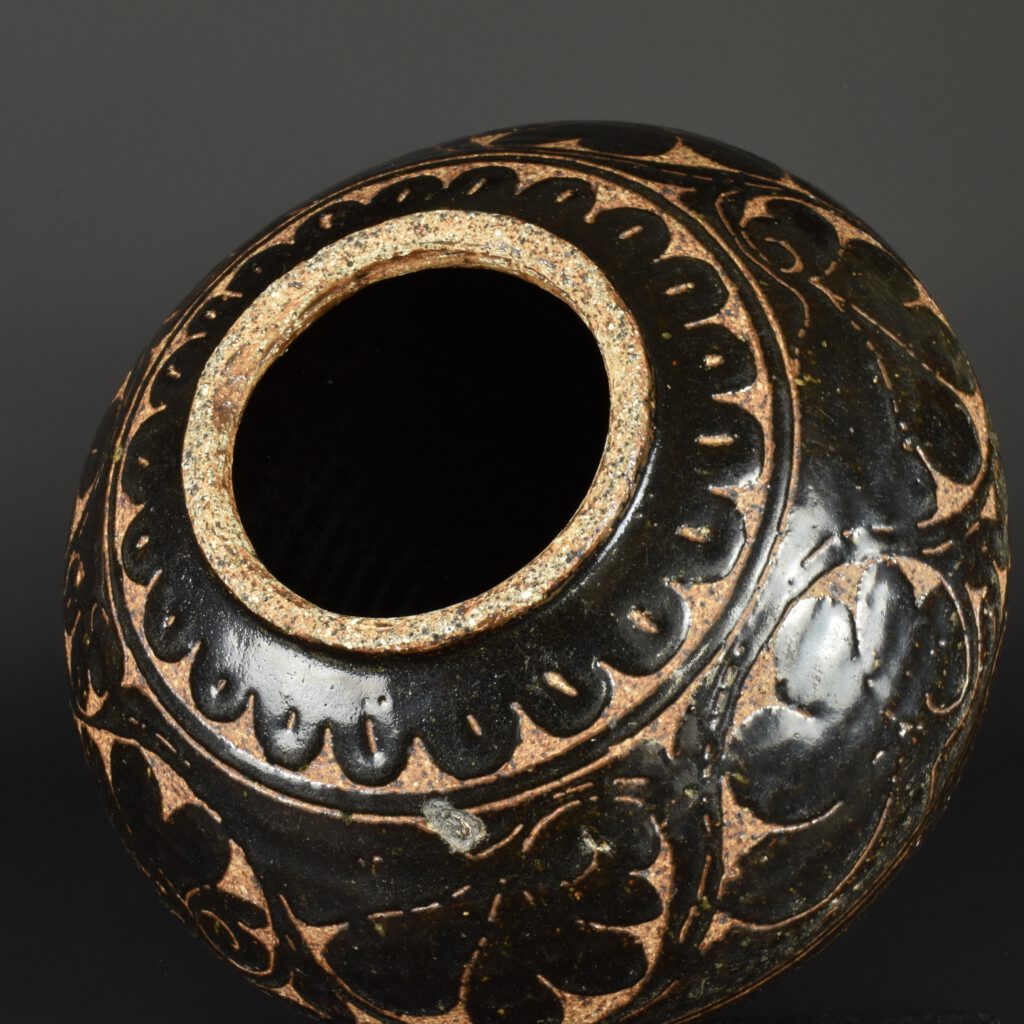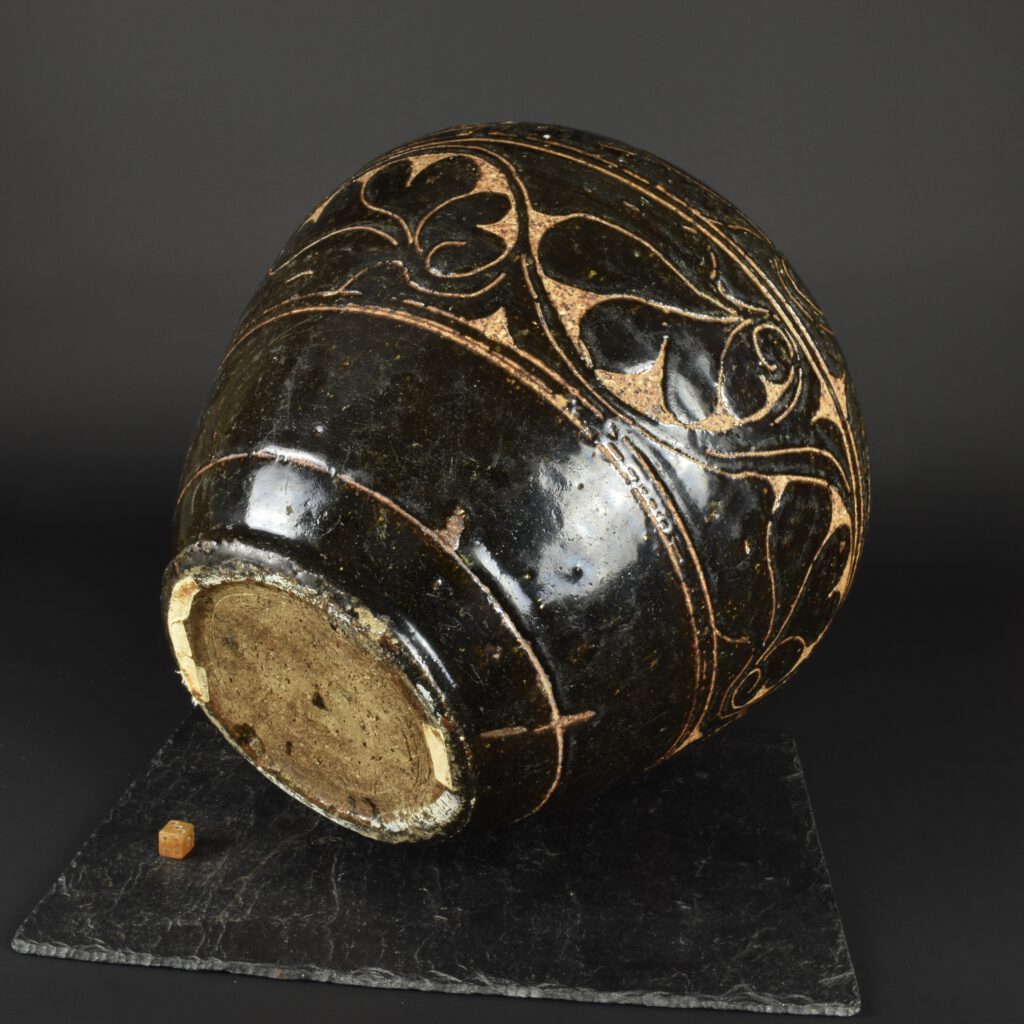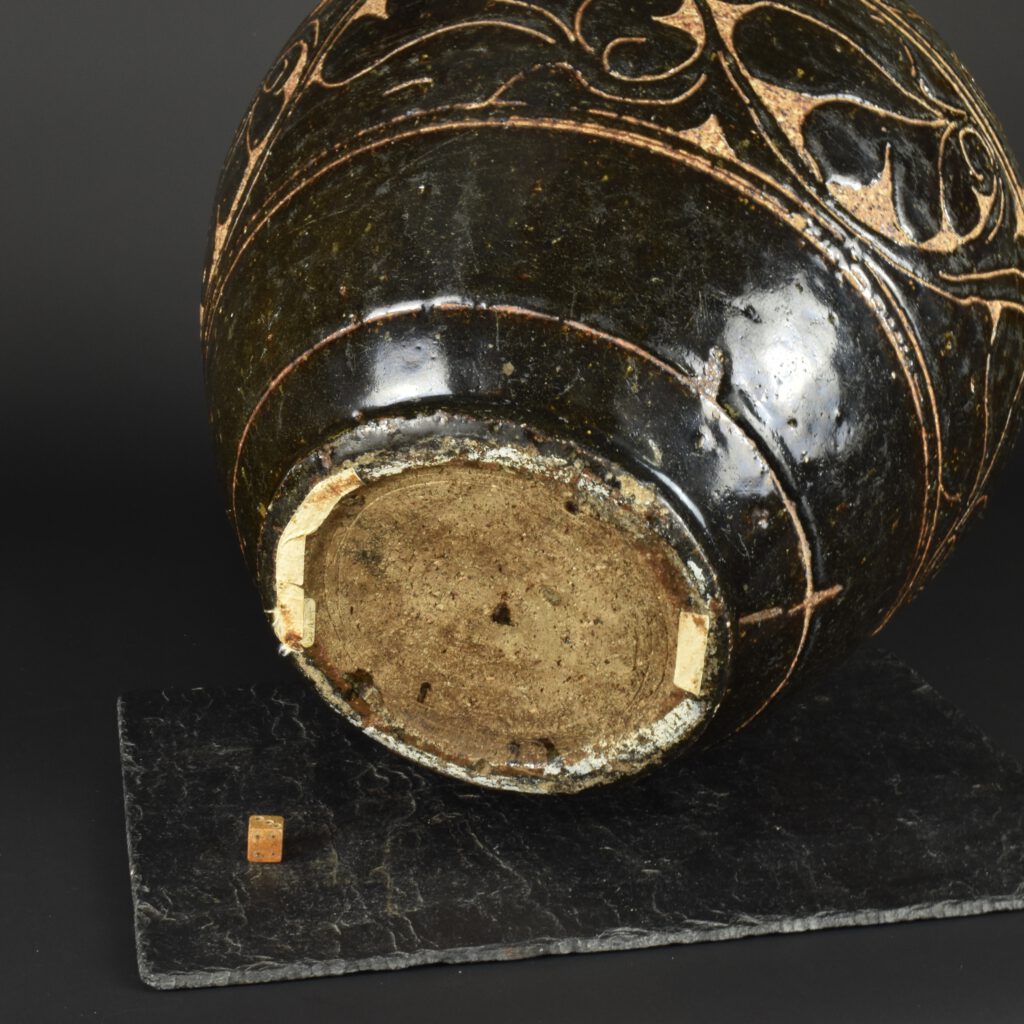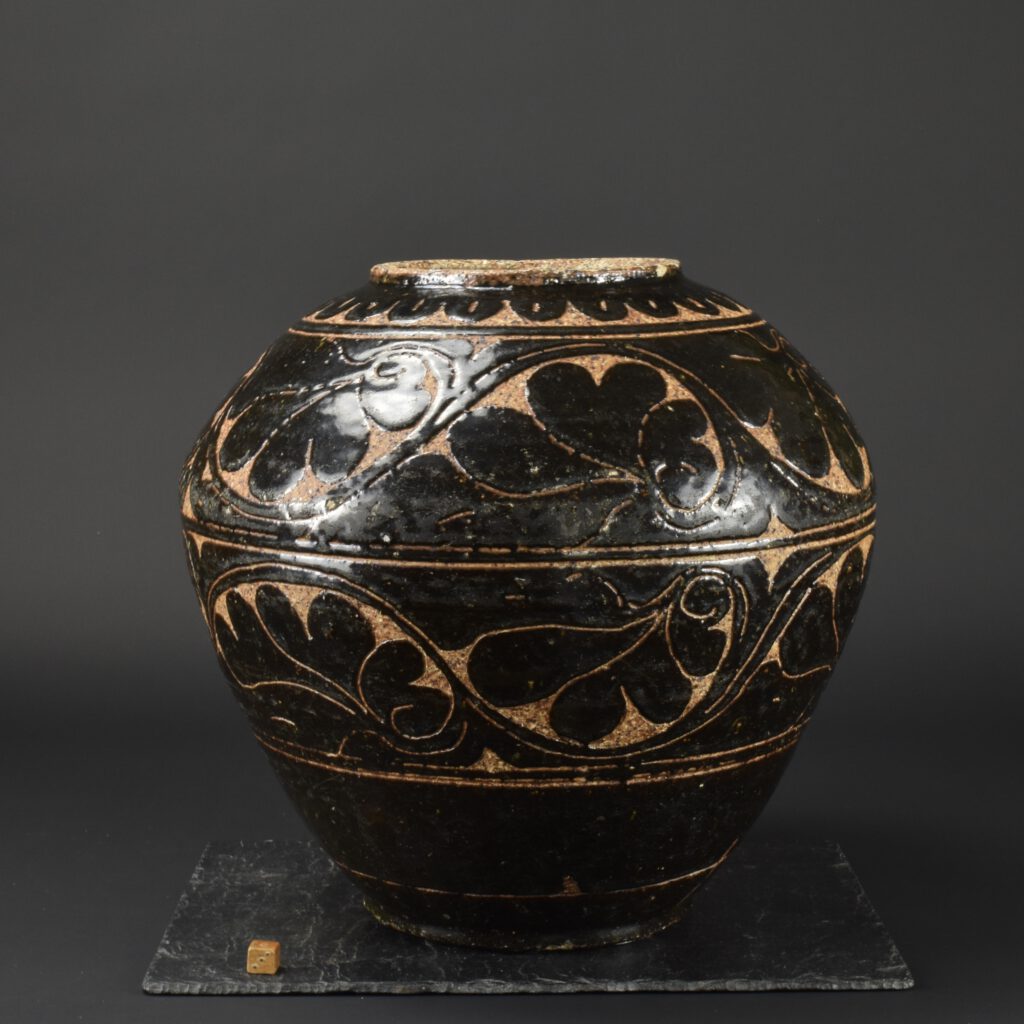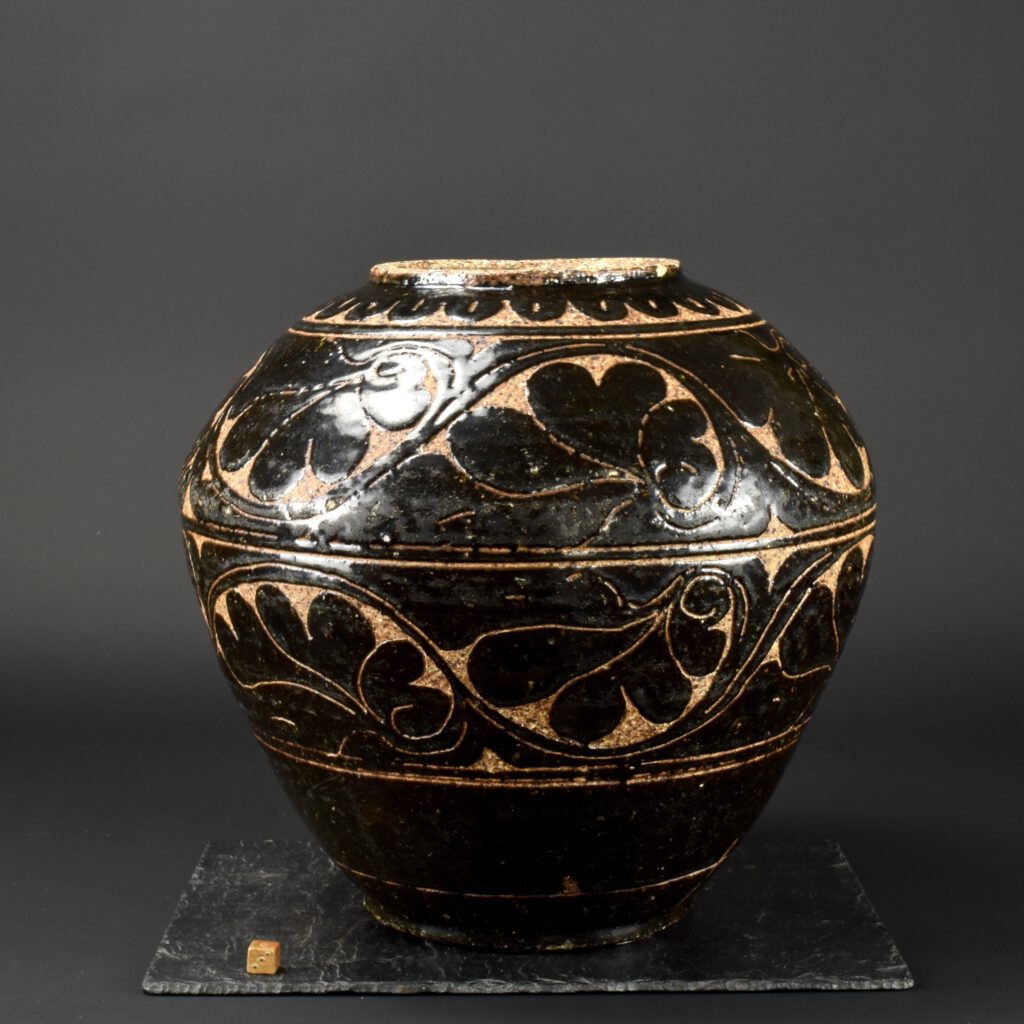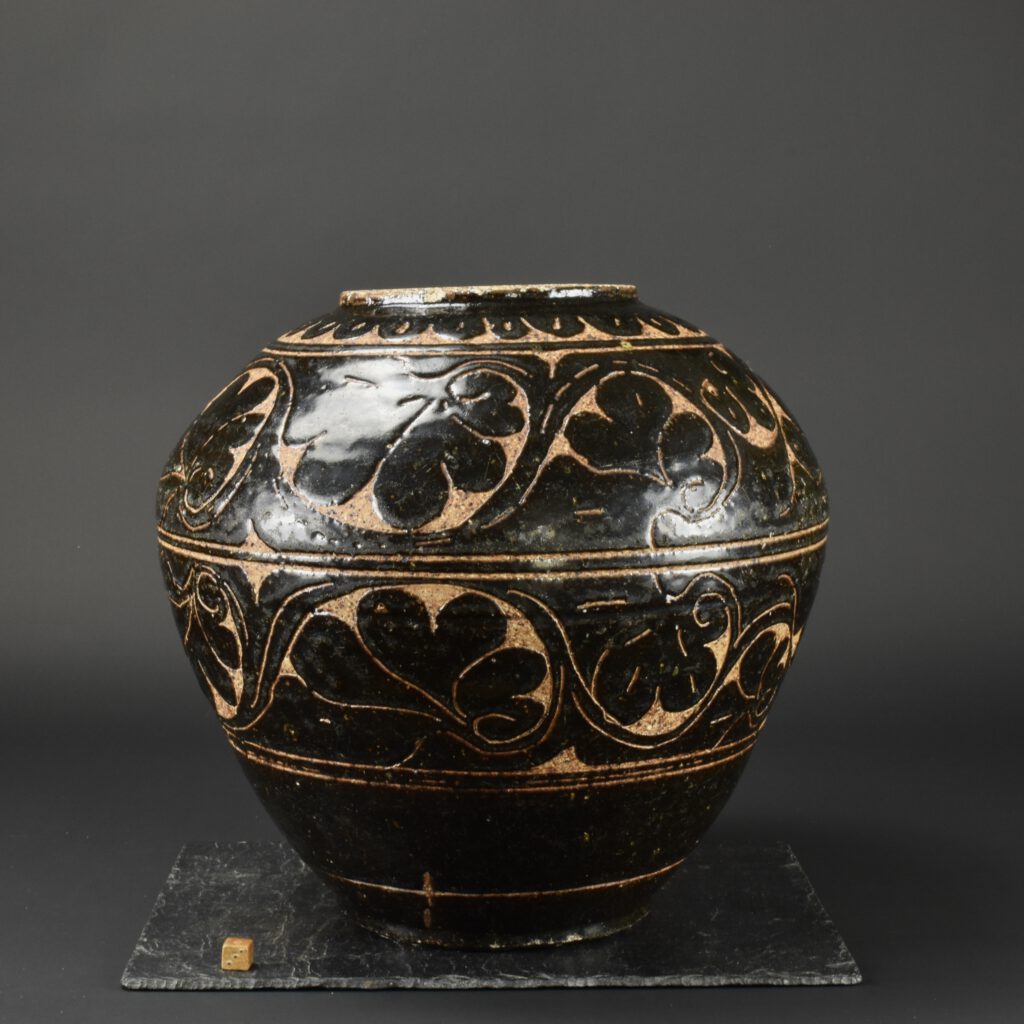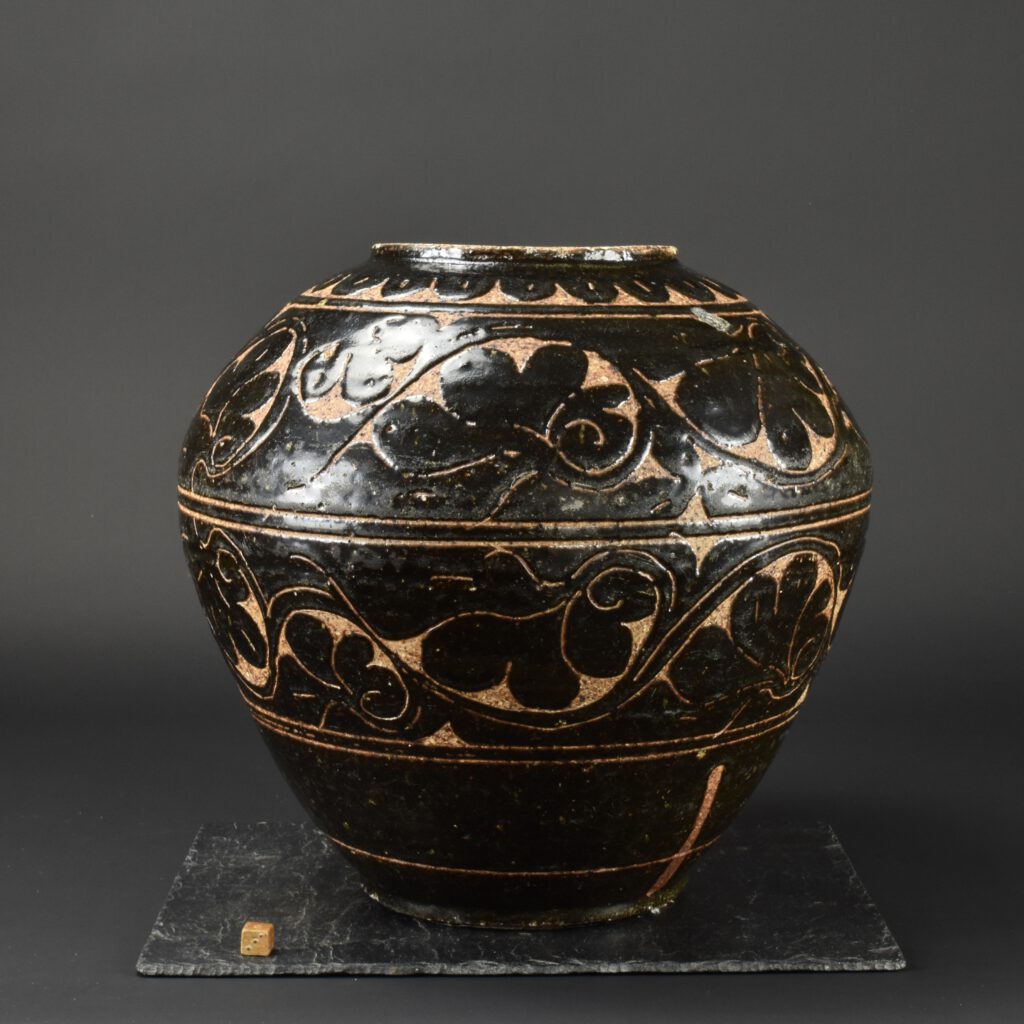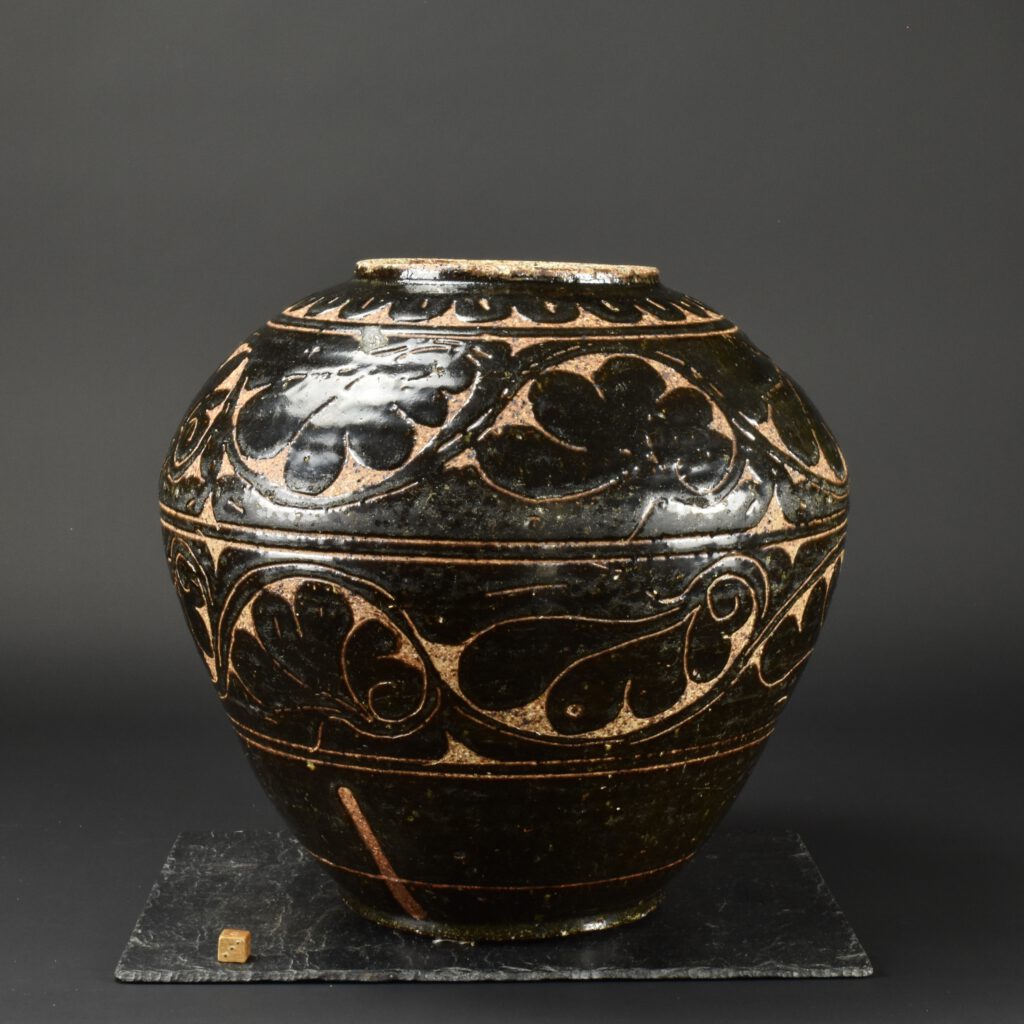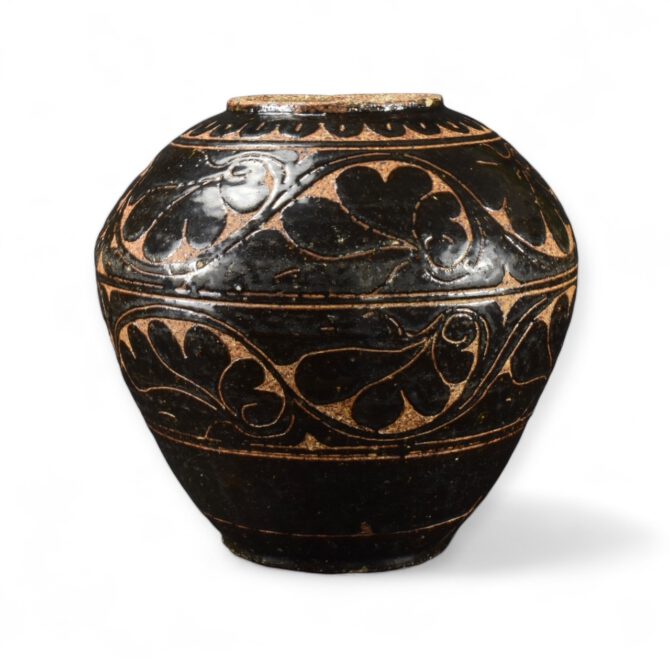
A Large Carved Yuan Black Glazed Sgraffito Stoneware Wine Jar
A Large Carved Yuan Dynasty (1279-1368) Black Glazed Sgraffito Stoneware Guan of Cizhou Type, North China, Probably Shanxi Province. Jars, like the present example were for storing wine, so it is referred to as a Guan. A very similar jar on display in the British Museum (Location On display (G33/dc33a/s3) (G33/dc33a/s3). It was Found/Acquired in Shanxi province in 1911, and the museum tentatively attribute its production to that province. Below is a photograph of the British Museum jar on display in the Sir Joseph Hotung Gallery. This imposing heavy Yuan jar is constructed from a stoneware which is rough and is gritty, this grit varies, it is full of different tones and colours from white, very pale yellow to brown and black. It was then dipped in a thick dark brown iron-rich glaze, this thick brown becomes black in appearance due to the density of the glaze. Before the glaze was completely dry, it was cut into with a sharp implement, exposing the rough stoneware body. The edges of the glaze are not hard like cut glass, as they would have been if the glaze had been fired. The edges are slightly soft, the trick was to cut through at just the right time, too early and the glaze would have run, too late and the blade might have dragged the glaze.The design is of a stylised scrolling palmate leaf in two mirrored registers. There are small areas where the glaze has run, on a large jar like this that is almost inevitable. Everything about this Guan is strong and solid, from the proportions to size and materials used.
SOLD
- Condition
- In good condition, the top rim is abraded, there are small traces of glaze. There is some wear and scratching, firing fault on the shoulder of the jar (See Photograph Gallery).
- Size
- Height 31 cm (12 1/4 inches).
- Provenance
- N/A
- Stock number
- 27166
- References
- A very similar Yuan or early Ming stoneware jar is on display at the British Museum, Museum number 1911,1025.11. For a similar smaller jar with sgraffito floral designs unearthed in Xuanhua district, Zhangjiakou city in the Hebei Institute of Cultural Relics see see Zhang Bai (ed), Complete Collection of Ceramic Art Unearthed in China, volume 3, Hebei, 中國出土瓷器全,Beijing 2008, p. 149
Information
British Museum, Sir Joseph Hotung Gallery.
A very similar Yuan or early Ming stoneware Guan. I took this photograph in the gallery recently.
Museum number 1911,1025.11.
https://www.britishmuseum.org/collection/object/A_1911-1025-11
Curator's comments
For a similar smaller jar with sgraffito floral designs unearthed in Xuanhua district, Zhangjiakou city in the Hebei Institute of Cultural Relics.
See Zhang Bai (ed), Complete Collection of Ceramic Art Unearthed in China, volume 3, Hebei, 中國出土瓷器全,Beijing 2008, p. 149
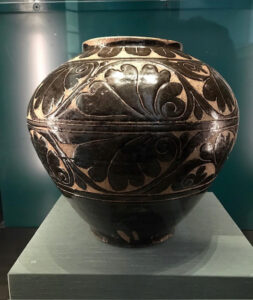
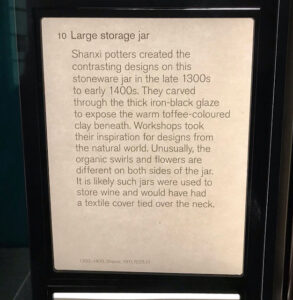
A Related Sgraffiato Jar Xixia or Jin Jar
Robert McPherson Antiques - Sold Archive 26073.
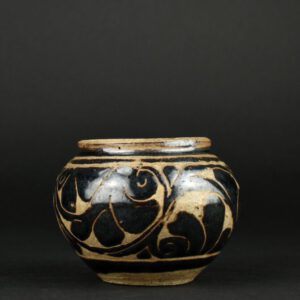
Xixia 1032 -1227 or Jin Dynasy 1115 -1234
A Fine Xixia (1032-1227) or Jin (1115-1234) small Sgraffiato Stoneware Jar, North or North West China. Made of fine stoneware which has been dipped in black-brown glaze and then when the glaze was in the process of drying it has been carved with stylised foliage. The body can’t have been fired as the edges of the carved glaze show tool marks that incise the stoneware body. A carved small jar of this type is illustrated in Chinese Ceramics from the Meiyintang Collection, Volume One (Regina Krahl, Azimuth Editions 1994. ISBN 1-8985592-02-0) page 250, plate 453.
Condition
In perfect condition (lacking cover).
Size
Height 7.3 cm (3 inches).
Provenance
From the Solk collection (Netherlands) purchased from Dries and Diana Blitz on August 26th 2004 for €3,350. A photocopy of the original invoice accompanies this jar.
Stock number
26073
Cizhou Ware :
A freedom of expression exists in Cizhou ware that is unparalleled by other Song dynasty (960-1279) ceramics. This was a direct result of not being under the control of the court; consequently, the liberty to explore and experiment created an innovative range of designs full of flavour and life unique to Cizhou ware. The utilization of enamelled decorations in tones of vivid reds, yellows, and greens on occasional Cizhou pieces placed it centuries ahead of its time as this was not kosher for early court wares. The ware also displays an amazing dexterity in the sketchily incised patterns which have such a sense of carefree abandon that they appear impressionistic. Today, Cizhou ware is prized for its natural appearance which often reveals the potter’s process from the wheel’s rings, to the inner spur marks, to the unevenly glazed base.
The white stonewares of the Tang dynasty (618-906) produced two extremely influential wares; the first, Ding ware, became the official ware while the second, Cizhou, became the “popular ware” among the varying classes. It was Cizhou wares utilization by society that assured its continuance during political and dynastic changes which extinguished other Song wares; consequently, Cizhou ware is still produced today though the wares created during the Song dynasty are considered to possess an unrivalled spirit. Since Cizhou ware embodies a diverse range of wares not confined to a specific location, kiln complex, or style it is difficult to precisely define its characteristics.
The name Cizhou originated from the ancient area of Cizhou, encompassing a broad arc across China, which was first recorded during the Sui dynasty (581-618). However, the location constantly shifted and though the area of Cizhou is mentioned in the Tang dynasty (618-906) and Five Dynasties (906-960), each referred to an altered location.During the Song, Jin (1125-1234), Yuan (1279-1368), and partly into the Ming dynasties (1368-1644) the kiln areas of Cizhou were primarily concentrated in the northern provinces of Hebei, Henan, and Shaanxi. (By Mindy MacDonald).
